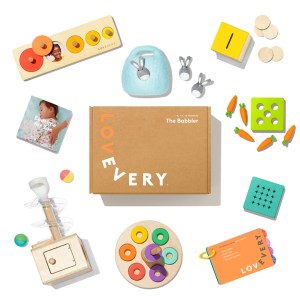Why labelling your toddler’s intense feelings can actually help calm them down

Dr. Dan Siegel coined the phrase “name it to tame it” as a way of describing how to help a child calm down. Describing what is happening and how the child might be feeling helps them process their emotions and begin to calm down. When you do this, your toddler sees that you believe the feelings they’re having, even if those feelings are frustrating or inconvenient to you in the moment.
From the moment they’re born, children need reassurance that a range of feelings is normal, and that emotions come and go. They also need to know that no particular feeling is either “good” or “bad”—rather, it’s knowing how to respond to our emotions that’s so critical, especially as we get older.
Here’s how to “Name it, To tame it”:
Try to accept all of your toddler’s feelings
Until around age 3, toddlers aren’t ready to reason through their difficult emotions. Instead, they rely on basic soothing strategies. Showing your toddler that you understand what they’re feeling helps calm them down, while naming their emotions helps them process and move through frustration, anger, and disappointment.
For example: if your toddler really wants something at the store and starts screaming, you can name it to tame it by saying, “I can see that you really want that toy—it looks like it would be so fun to play with, doesn’t it? We’re not going to buy it today, and I can tell that upsets you”.
If your toddler calms down a bit, you can move along by offering an opportunity to switch gears: “should we walk or skip to the car?” or “would you like to hold hands or elbows?”.
They may, however, still be mid-tantrum and unable to hear much of what you’re saying. In this case, consider saying very little (“I know you’re upset”) while offering a hug if they’re ready for one. Take some deep, intentional breaths, and eventually, they may join you in your breathing and calm down.
Talk about the feelings you see in others

Genuine empathy doesn’t typically start to develop until around age 2, but you can lay the groundwork by encouraging your toddler to pay attention to the feelings of others: “oh, look! Jasmine just went down the slide by herself. She looked nervous at first, but now she is so proud!”.
Books are also a great place to do this. Talk about the expressions you see in photographs or illustrations, and relate the feelings expressed by characters in the story to real moments from your child’s life.
Connect to past challenges
Later on, telling the story back to your toddler can be reassuring. By reminding them of their resilience, you are reassuring your toddler that they worked their way through a tough time, and now they’re okay. Use details to remind them of the experience and don’t shy away from using more complex words like “frustrated”, “disappointed”, or “anxious”.
Retelling a negative experience can feel counterintuitive, but it actually helps toddlers connect the parts of the brain they use for emotion with the parts they use for reasoning.

The Play Kits
The Play Kits by Lovevery are thoroughly tested, baby safe, eco-friendly and Montessori inspired. Give your child the best start with our stage-based play toy subscription boxes.
Learn morePosted in: 22 - 24 Months, Books, Communication, Language, Child Development
Keep reading

22 - 24 Months
25 - 27 Months
28 - 30 Months
31 - 33 Months
34 - 36 Months
Our favourite birthday and holiday gift ideas for 2-year-olds
These fun gift ideas for 2-year-olds support their motor skills, independence, and creativity.

19 - 21 Months
22 - 24 Months
25 - 27 Months
28 - 30 Months
31 - 33 Months
34 - 36 Months
What kind of chores are right for my child?
Children as young as 18 months can start taking on regular household responsibilities. These will be simple and straightforward, like wiping up spills or helping set the table, and will require modeling and patience from you.


22 - 24 Months
Welcome to The Companion Play Kit for months 22-24
Watch Lovevery CEO Jessica Rolph introduce the CompanionPlay Kit for months 22 to 24 of your toddler's life.
